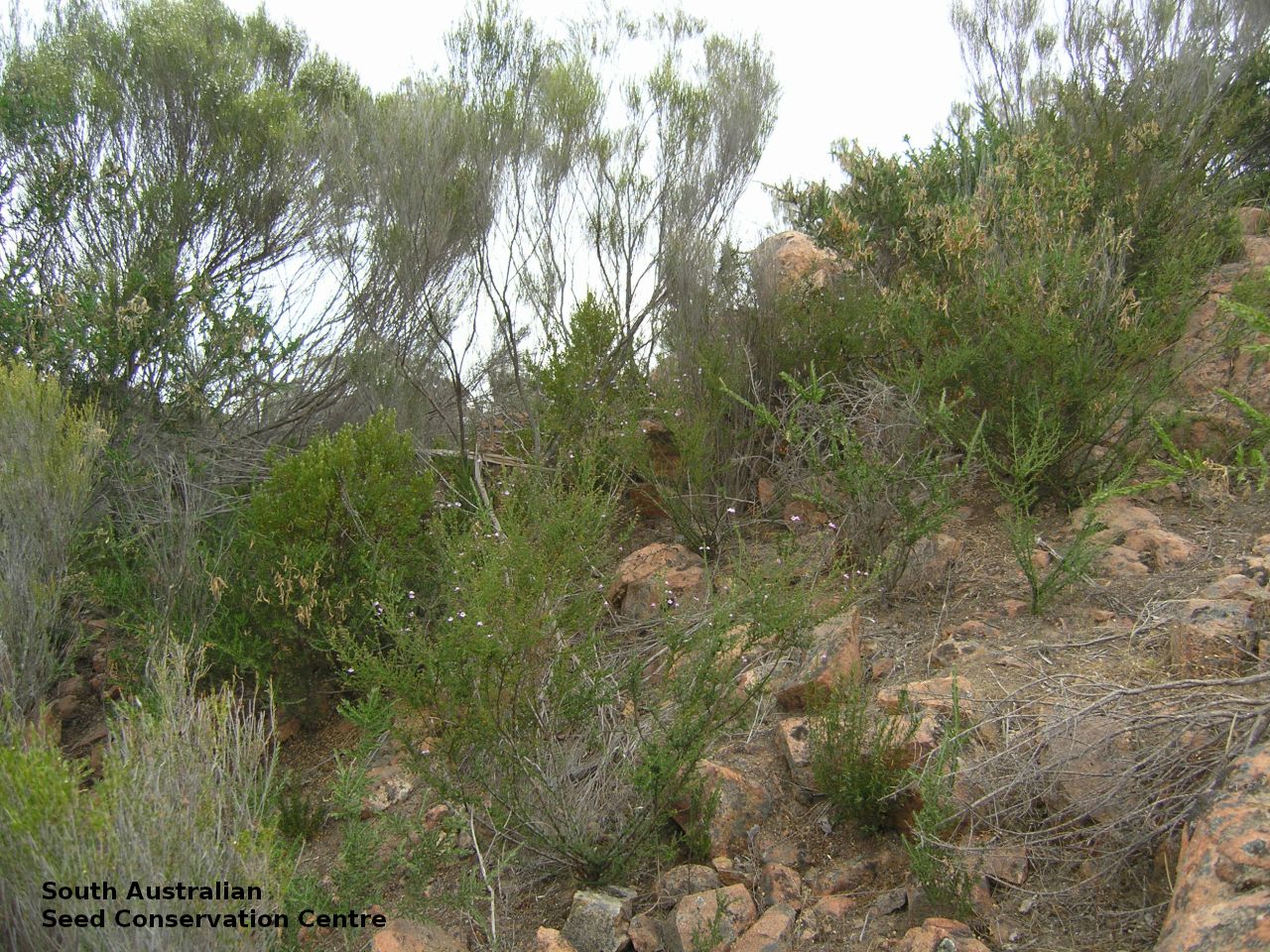
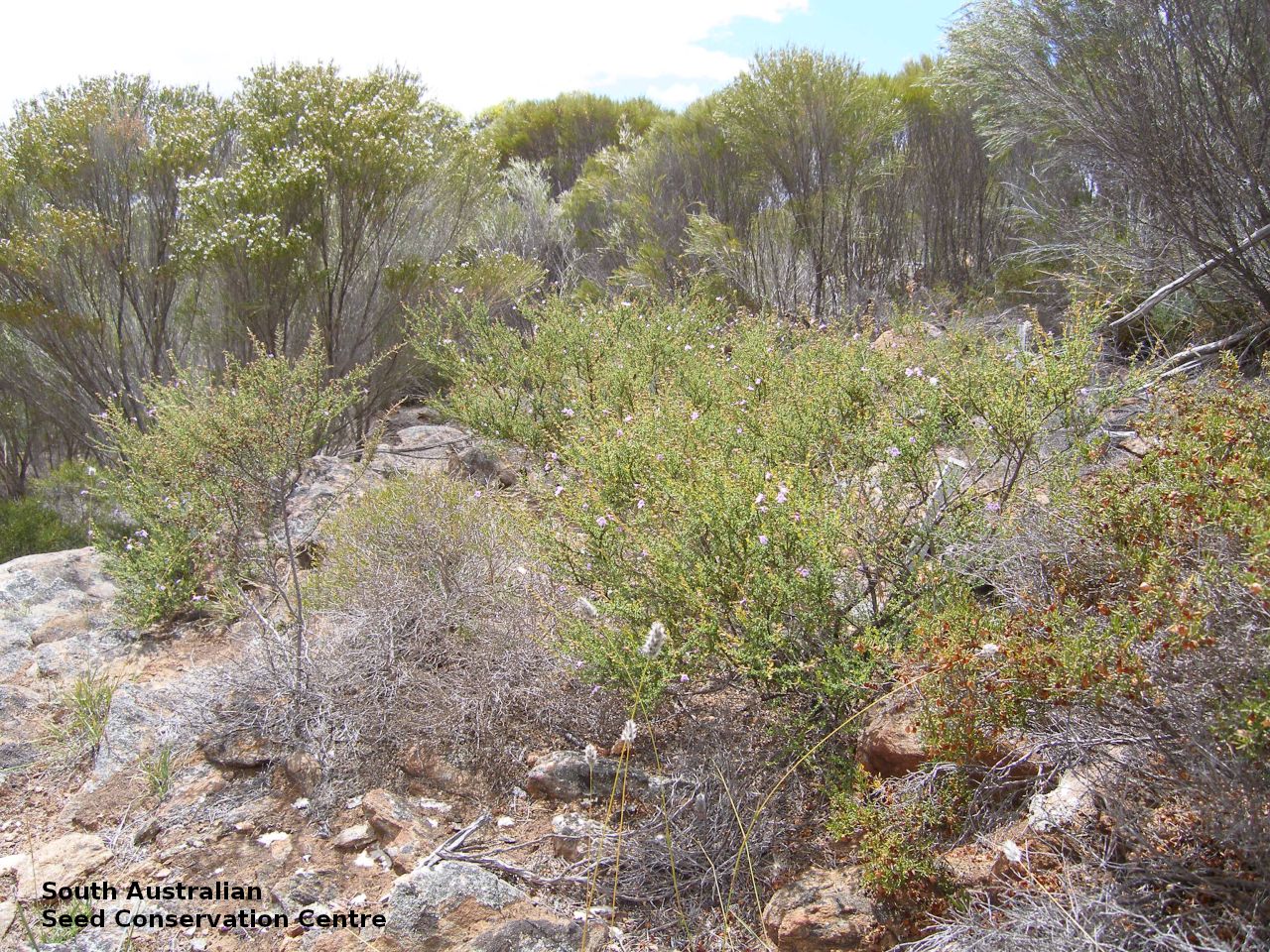
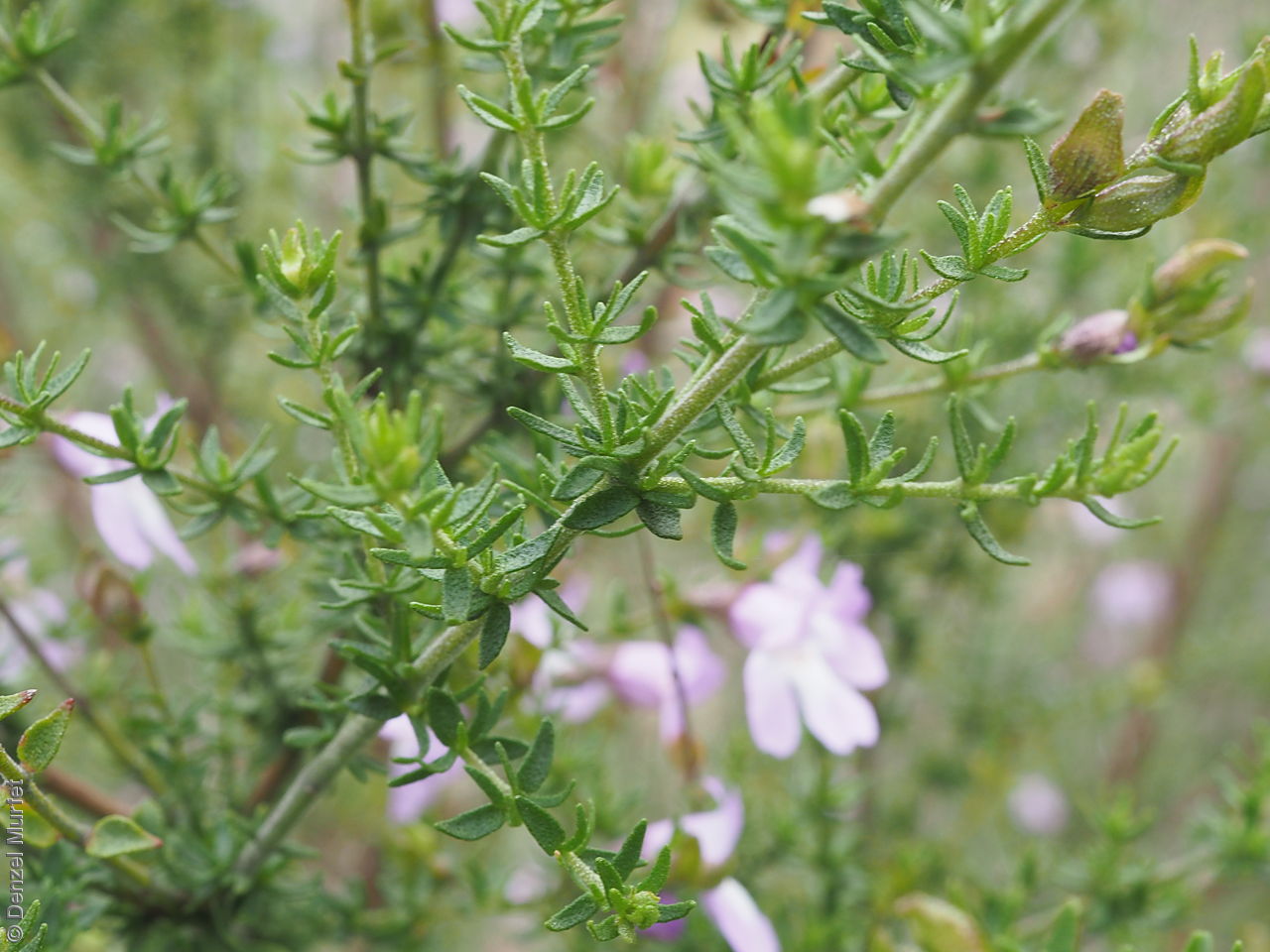
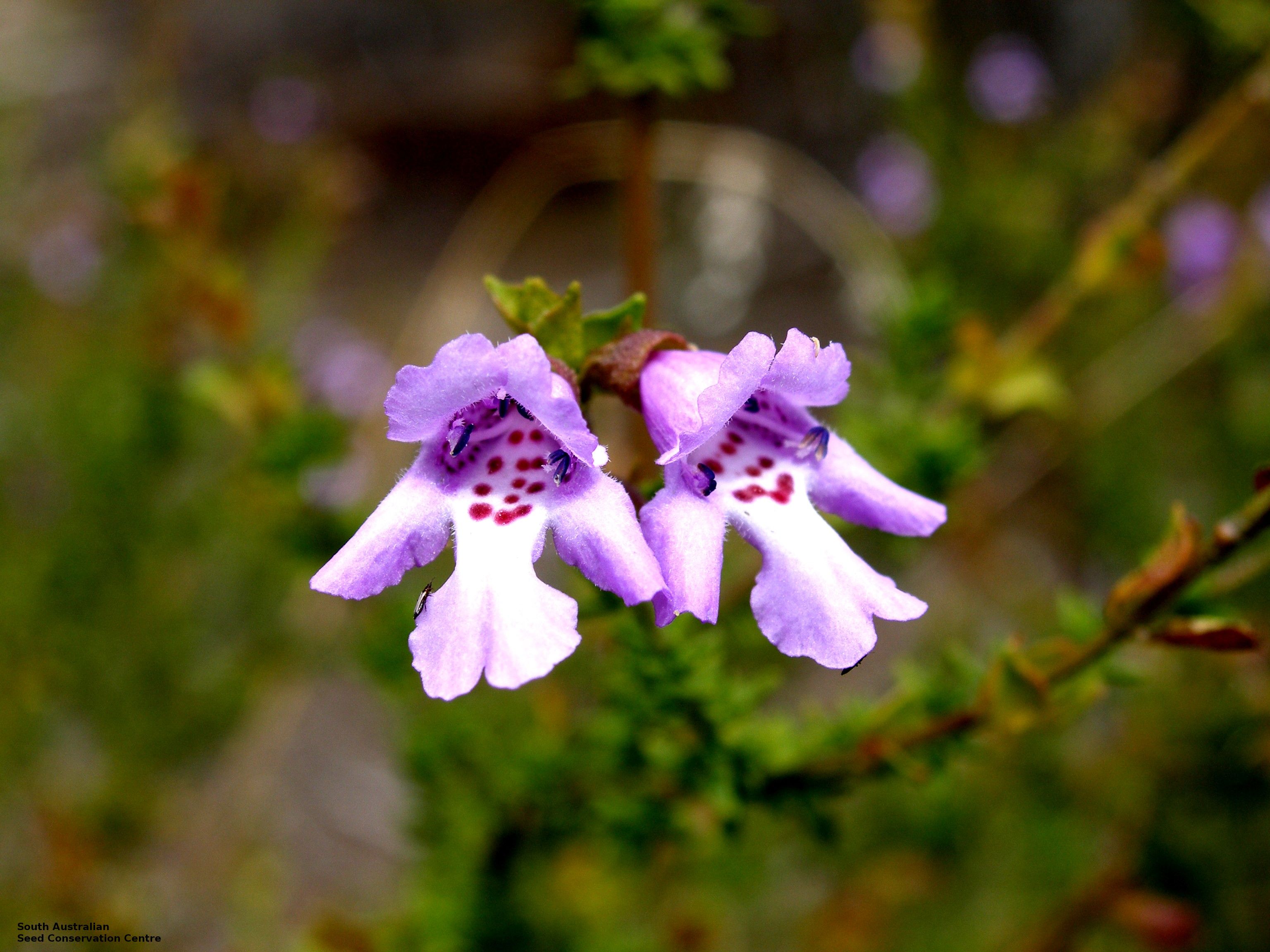

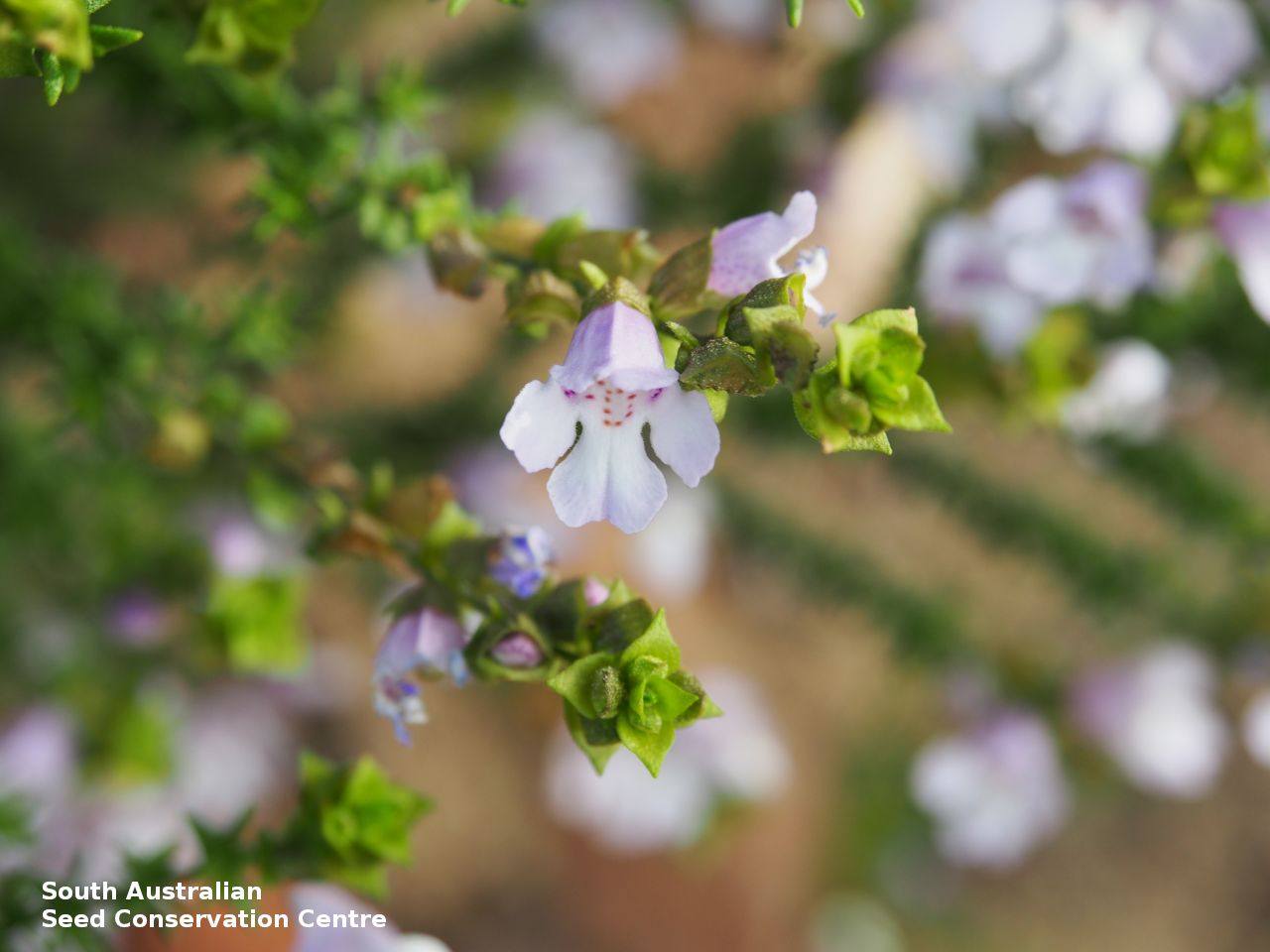
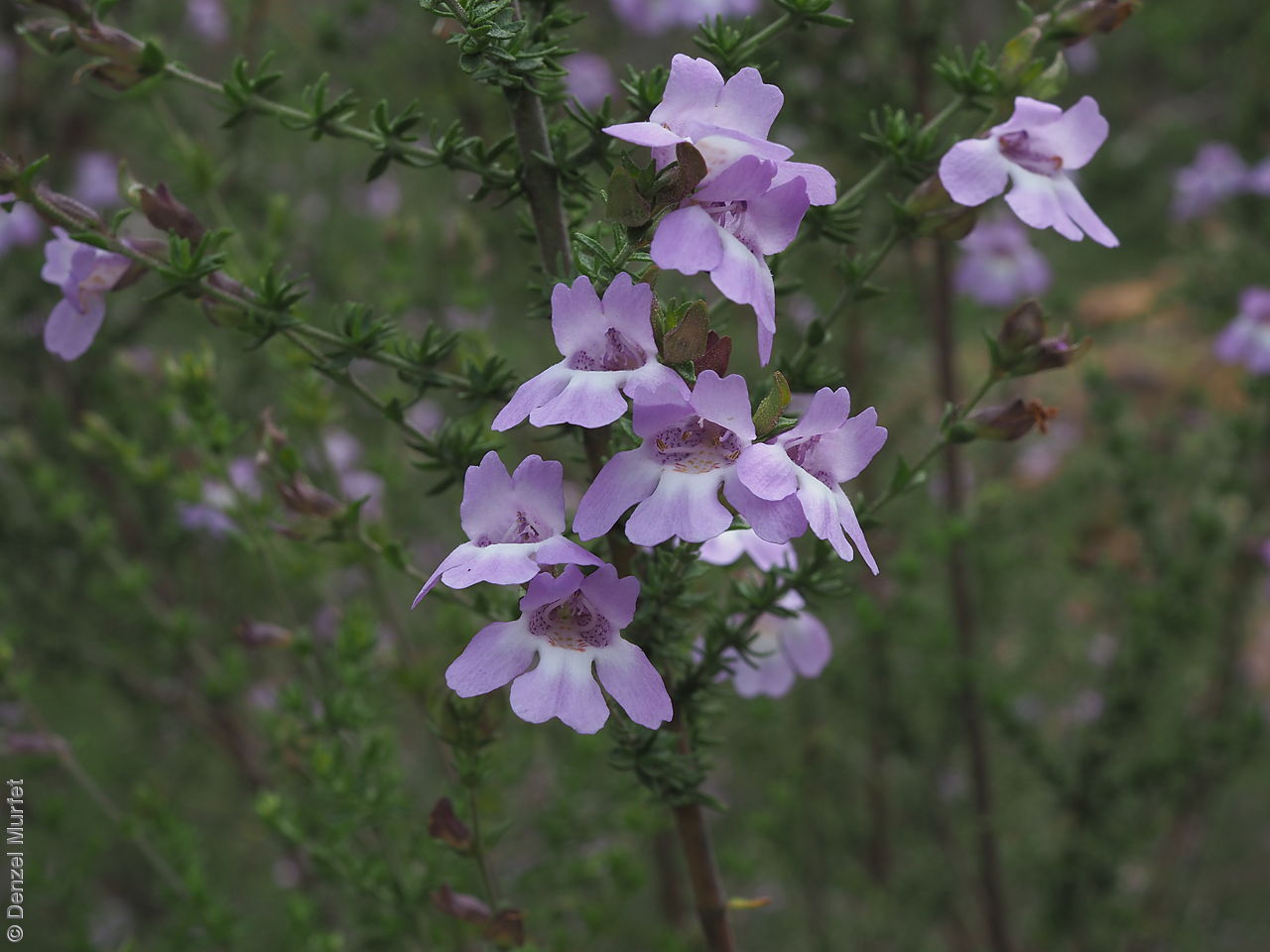
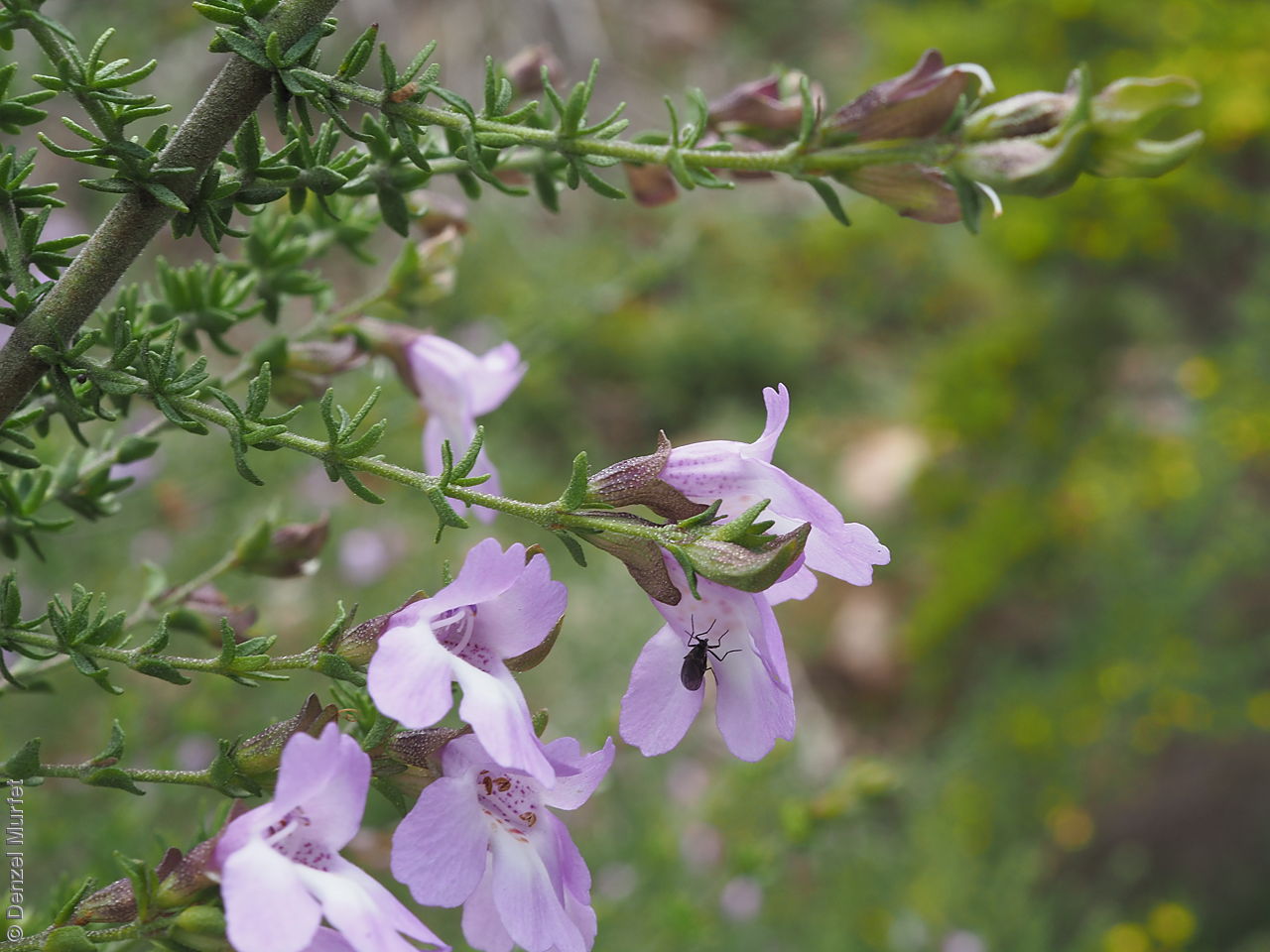
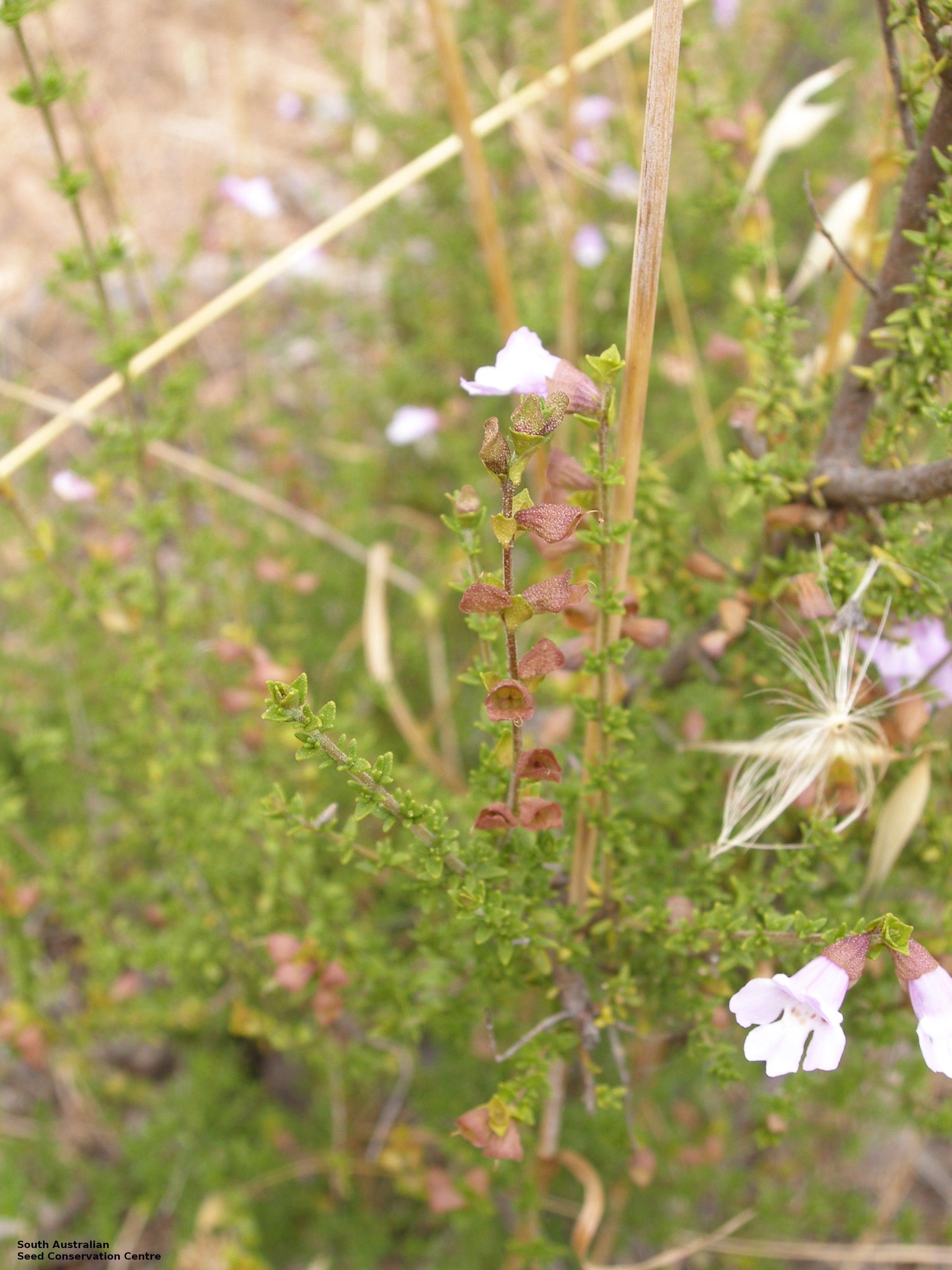
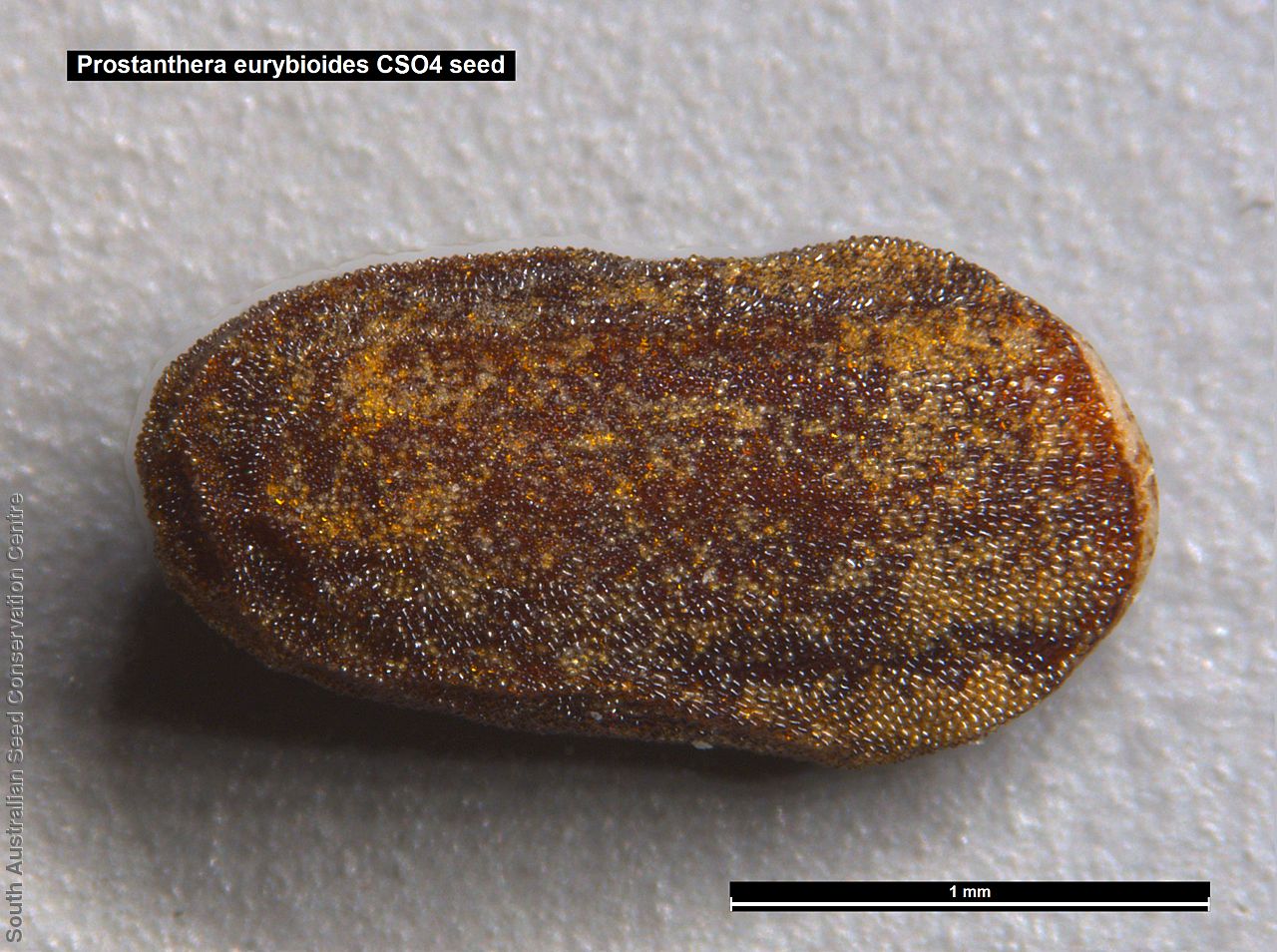
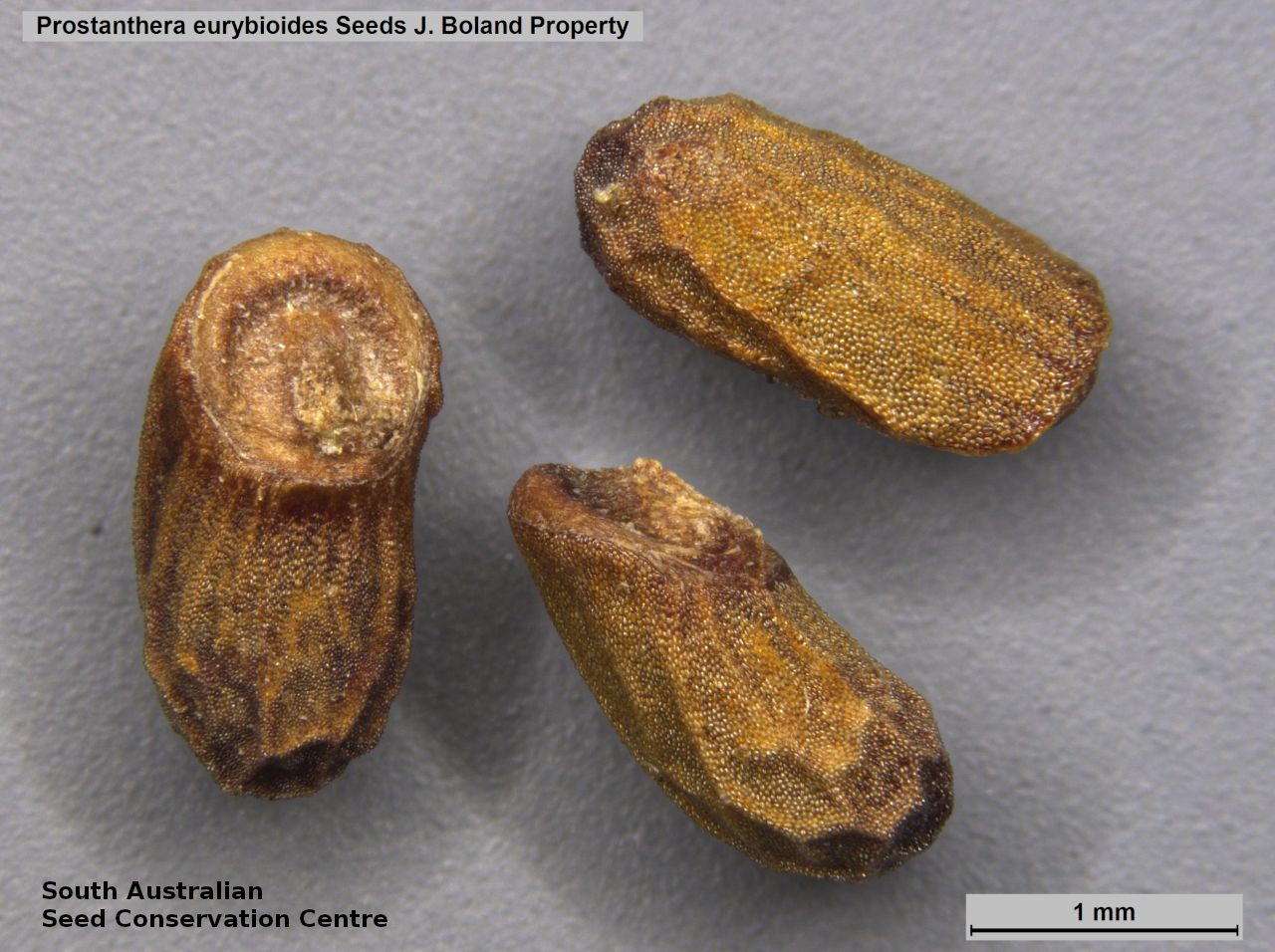

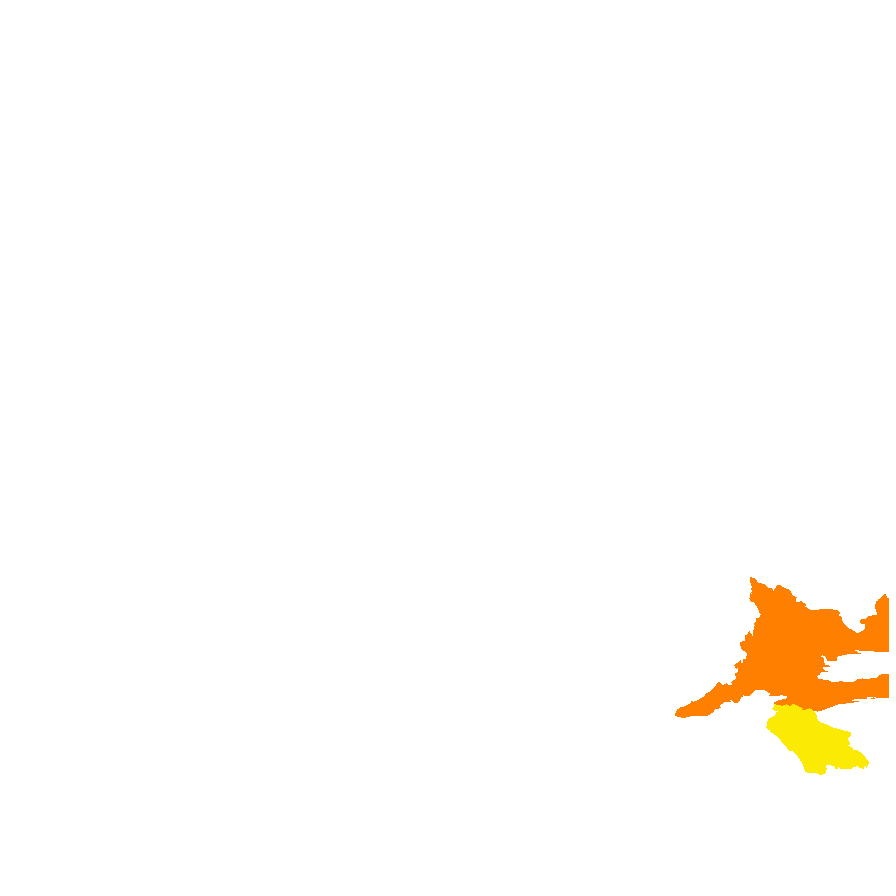
Botanical art
Etymology
Prostanthera from the Greek 'prostheke' meaning an appendage and 'anthera' meaning anther; referring to the spur-like appendage of the anther. Eurybioides means resembling the genus Eurybia (Eurybia is the daughter of Pontus and Gaea, and a sea goddess in Greek mythology); referring to its habit which resembles that of Eurybia lepidophylla.
Distribution and status
Endemic to South Australia and found in two disjunct locations near Montato in the Murrayland and Keith in the upper south-east, growing on granite outcrops on sandy loam soils in Eucalyptus mallee woodland. Native. Very rare in South Australia.
Herbarium regions: Murray, South Eastern
NRM regions: South Australian Murray-Darling Basin, South East
AVH map: SA distribution map (external link)
Plant description
Low spreading shrub to 1 m high with branches covered in dense curled long hairs. hairy branches. Leaves clustered on short shoots, elliptic to ovate, to 2.5 mm long and 2 mm wide, thick, glabrous or sparsely hairy, base obtuse to rounded, margin entire, apex obtuse. Inflorescence solitary in leave axis with pale purple tubular-shaped flowers with brown or orange spots on the inside. Flowering between August and November. Fruits are dark brown woody capsule to 2.4 mm long mm long, with up to four segments, surround by the calyx. Seeds are brown oblong seed to 2.2 mm long and 1 mm wide, with a large plug at one end. Seed embryo type is spatulate fully developed.
Seed collection and propagation
Collect seeds between November and January. Collect capsules that are fat and turning brown, either individually or by running your fingers along a stem with numerous capsules.
The collection and storage of seeds for this threatened species in 2016, which is potentially impacted by the plant pathogen Phytophthora cinnamomi, was supported through funding from the Australian Government’s Threat abatement plan for disease in natural ecosystems caused by Phytophthora cinnamomi. A total of three populations occurring in native remnant vegetation on private property in the Monarto region were collected and banked (25,000+ seeds). A sample of this collection will be used to propagate 1,500 plants for a recovery project in 2018 with the support of Natural Resources SA Murray-Darling Basin. Place the capsules in a tray and leave to dry for one to two weeks. Then rub the capsules gently with a rubber bung to dislodge the seeds. Use a sieve to separate the unwanted material. Store the seeds with a desiccant such as dried silica beads or dry rice, in an air tight container in a cool and dry place. From five collections, the seed viability were high, at 100%. This species has physiological dormancy that needs to be overcome for the seed to germinate.
| Location | No. of seeds (weight grams) | Number of plants | Date collected | Collection number Collection location | Date stored | % Viability | Storage temperature |
|---|---|---|---|---|---|---|---|
| BGA | 700 (4.16 g) | 12 | 18-Nov-2004 | PJA86 Murray | 28-Mar-2006 | -18°C | |
| BGA | 1,000 (0.96 g) | 35 | 17-Jan-2006 | PJA121 Murray | 1-Aug-2007 | 100% | -18°C |
| BGA MSB | 13,200 (19.04 g) 13,200 (19.04 g) | 80 | 30-Dec-2004 | DJD53 South Eastern | 1-Aug-2007 | -18°C | |
| BGA | 4,800 (4.8 g) | 40 | 24-Nov-2006 | CSO5 South Eastern | 1-Aug-2007 | 100% | +5°C, -18°C |
| BGA | 4,400 (6.3 g) | 40 | 11-Dec-2006 | PJA147 South Eastern | 1-Aug-2007 | 100% | +5°C, -18°C |
| BGA | 8,470 (9.32 g) | 50 | 24-Nov-2006 | CSO4 South Eastern | 1-Aug-2007 | 100% | +5°C, -18°C |
| BGA | 11,300 (10.69 g) | 30 | 13-Dec-2016 | P. Giles Property Murray | 1-Nov-2017 | 90% | +5°C, -18°C, -80°C |
| BGA | 6,000 (6.5 g) | 2 | 13-Dec-2016 | Kinchina CP Murray | 1-Nov-2017 | 75% | +5°C, -18°C, -80°C |
| BGA | 8,500 (8.3 g) | 40 | 13-Dec-2016 | J. Boland's property Murray | 1-Nov-2017 | 65% | +5°C, -18°C, -80°C |
| BGA | 8,400 (8.442 g) | 18 | 17-Jan-2022 | D170122.1MU Murray | 7-Jul-2022 | 86% | -18°C, -80°C |
| BGA | 2,800 (2.655 g) | 18 | 17-Jan-2022 | D170122.2MU Murray | 7-Jul-2022 | 84% | -18°C |
| BGA | 2,800 (2.600 g) | 30+ | 17-Feb-2023 | D170223MU Murray | 20-Jun-2023 | -18°C |
Number of plants: This is the number of plants from which the seeds were collected.
Collection location: The Herbarium of South Australia's region name.
% Viability: Percentage of filled healthy seeds determined by a cut test or x-ray.